If you don’t have a 1080p webcam for your Teams or Zoom calls, you’re missing out. Why spend money on hair, makeup, and skincare, then use a poor 720p webcam in front of friends and colleagues? Our picks for the best webcams mean that you can look your best, for less.
Probably no other hardware category has seen such rapid improvements as webcams, thanks to the work-from-home trend. Webcam makers have realized that 1080p resolution and improved audio are now basic requirements. Most laptops still ship with a 720p webcam, however, making a standalone webcam a valuable upgrade. Premium options include 4K resolution, ring lights, and more.
We haven’t tested every one of these webcams, just most of them. You can also refer to our separate story on the best Windows Hello webcams for recommendations on webcams that aid videoconferencing and log you into your PC. We’ve taken two recommendations from that list and added them here: a premium and budget webcam with Windows Hello.
We present our recommended webcams first, followed by buying advice to help you decide. Take note of our FAQ, as there’s a new upcoming Windows feature that may have some big ripples on the webcam industry!
Some webcams we review don’t make the cut: The EPOS Expand Vision 1 4K webcam, for example, demonstrated a lack of grip. Our most recent review, the CA Essential Webcam Flex, is certainly one of the most unique webcams we’ve seen, and we recommend you take note of how it positions the cam directly in your sightline. But we can’t wholly recommend it, compared to the competition.
Anker PowerConf C200 – Best overall webcam
Pros
- 2K (1440p) resolution
- Adjustable field of view
- Solid low-light performance
- 18-month warranty
Cons
- Lacks 60fps support
- Anker software is necessary for full control
- Color balance is middling
Price When Reviewed:
$59.99
We’ve replaced the Logitech C920e as our best webcam pick if only because Anker simply offers so much more for less. First off, Anker’s PowerConf C200 provides an upgraded 1440p resolution, better than 1080p to make you look clearer and more professional. Second, this webcam offers an adjustable field of view (65, 78, and 95 degrees) meaning that you can manually crop out portions of the background you don’t want to be visible.
For some reason, Amazon markets this as a “Mac” webcam. Anker provides Windows drivers, so you don’t need to worry about that. However, you will need Anker’s software to take full advantage of all the webcam’s features—e.g, though the USB-A cable makes this a plug-and-play device, the software is necessary to adjust the field-of-view function.
The PowerConf C200 includes noise-cancelling mics and an integrated privacy shutter, which turns off the whole device—a plus, if you’re concerned about a bad guy somehow hacking your mic and listening to your conversations with your family, boss, and pets. You can even adjust the mic pickup to focus on you, versus omnidirectionally.
Reviewers have some concerns about the color accuracy, but the low-light performance makes up for it—you shouldn’t need a ring light. For all this, and for about $60? That’s a solid deal. There’s an upgraded C300 model for an additional $40, but we think this is a better deal.
Logitech C920e Business Webcam – Best overall webcam runner-up
Pros
- Three-year warranty
- Exposure and color controls
- 78.5-degree viewing angle
- 1080p
Price When Reviewed:
69.99
The 1080p Logitech C920e webcam is the most recent version of the venerable Logitech C920, probably the most iconic webcam of the last few years. Confused about whether you should buy the C920e or the C920s? Logitech describes the C920e as a business camera, and the C920s as the consumer version—they’re otherwise identical, save that the C920e has a three-year warranty versus a two-year warranty, while costing the same. The C920e reportedly offers lighting and color controls that the C920s does not, as well.
Both cameras use a narrower 78.5-degree viewing angle, which focuses on your face better than webcams that use a 90-degree viewing angle. It’s also an autofocus camera, which helps justify its higher price. The C920e connects to your laptop using a USB-A cable measuring 5 feet.
Aside from a lack of 60fps support, this is still a great webcam. We prefer it, in fact, to Logitech’s most recent webcam, the Logitech Brio 305, which is slightly more expensive and lacks the 1.2X zoom the C920e offers.
A number of Asian companies are starting to match what the C920e offers on paper, but its superb video quality could be harder to mimic. You can refer to our Logitech C920 review for more information.
Creative Live! Cam Sync 4k – Best budget webcam
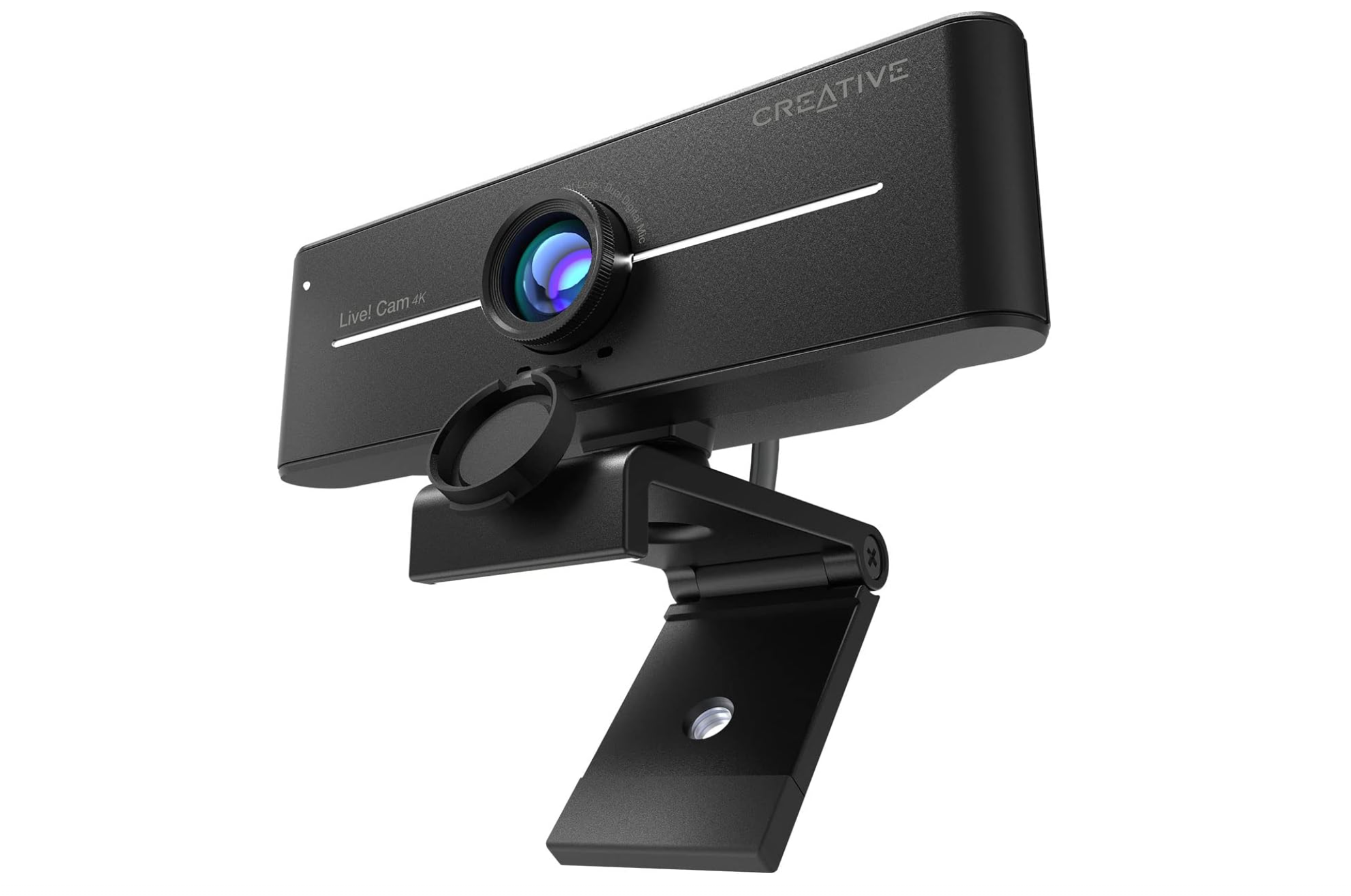
Pros
- 4K resolution for cheap!
- Backlight adjustment isn’t bad
Cons
- Poor color balance
- Adjustable focus is of iffy value
- Cheats a bit in frame rate
Price When Reviewed:
59.99
The Creative Live! Cam Sync 4K webcam is proof that the prices of premium webcams are plunging — or is it that budget webcams are getting really good?
This 4K webcam offers a lot, although you can still see where Creative made some decisions to cut corners. There’s no autofocus, for example, just a focus dial. Backlight compensation (which is rather useful, actually) is accomplished by stepping through a series of adjustments by pressing a button. There’s a flip-over privacy shutter, and a button to mute the mic.
I wasn’t a fan of the color balance, which will need some adjustment to help you look your best. The camera cheats a bit on the frame rates, though. Both are flaws, but neither are huge disadvantages. All in all, it’s still a good value.
Read our full
Creative Live! Cam Sync 4k review
Monoprice 2K USB Webcam – Best budget webcam runner-up
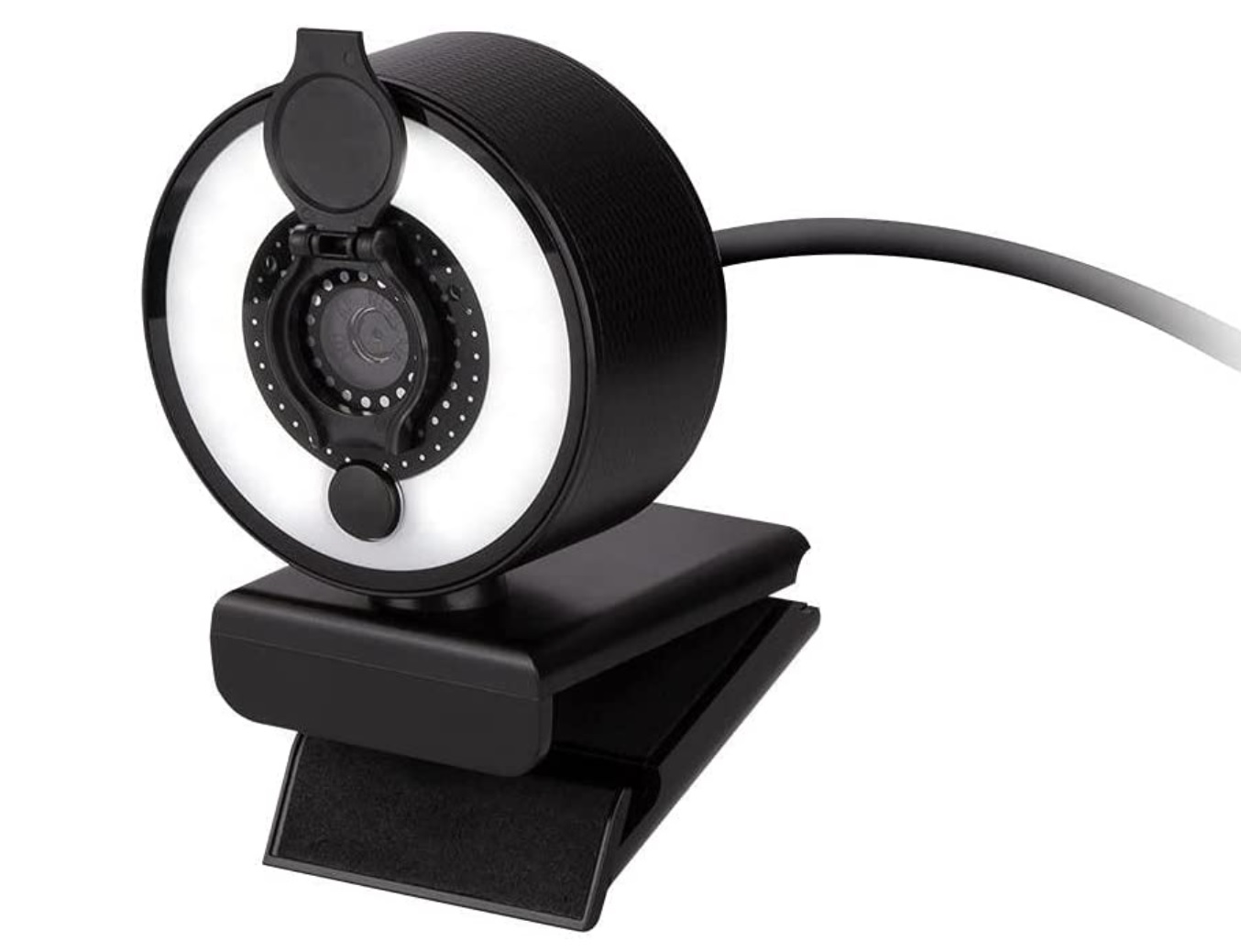
Pros
- Fantastic price
- 2K resolution, with autofocus
- Works well as a laptop webcam
- Bonus ring light
Cons
- Review unit broke after a fall
- Tends to overexpose the user
- Lousy mic quality
- DIY privacy shutte
Price When Reviewed:
49.99
Monoprice appears to have discounted this webcam to $34.99, and for that price it’s hard to pass up. Our review of this webcam, below, points out its flaws: It tends to overexpose the user, even without the integrated ring light, and the mic quality is poor. The DIY privacy shutter is a little goofy but works fine.
Honestly, if you’re the kind of person who can look past a few quirks, there’s a lot to like here. The 2K (1440p) / 30Hz resolution looks even sharper than a 1080p cam, for one. You will tend to look blown out a bit if you use and are lit by an external display. As a plain-Jane webcam that hooks onto your laptop screen, however, the white balance evens out just fine.
The mics are one of its irredeemable flaws, though. If your laptop has an integrated mic, you may find that it’s better than what Monoprice’s webcam offers. After our review, we accidentally flipped it backwards off the display, and it stopped working.
Read our full
Monoprice 2K USB Webcam review
Anker B600 Video Bar – Best premium webcam
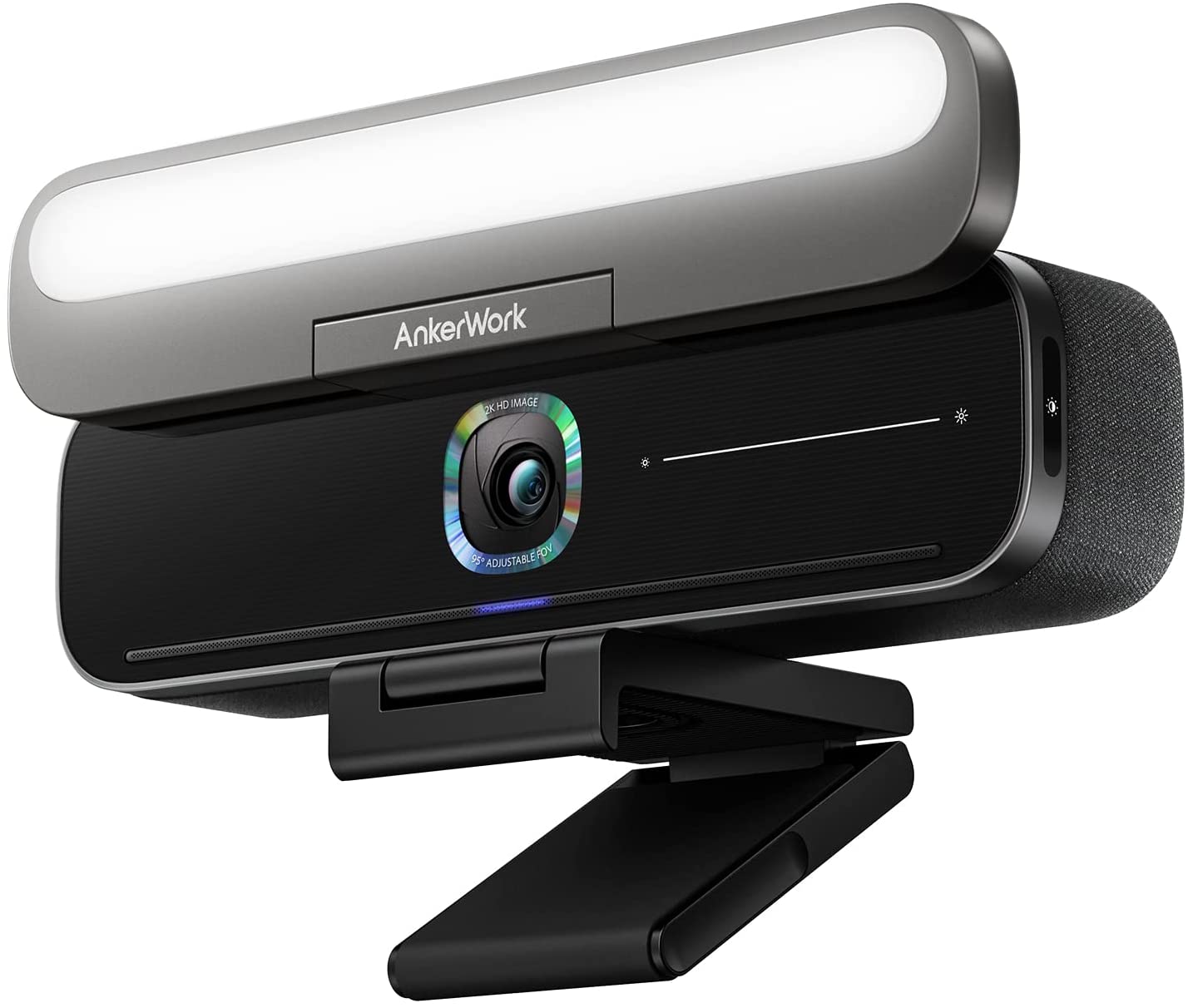
Pros
- 65, 78, and 95 degree viewing angles
- Built-in speaker, microphone, and light bar
- Adjustable settings for brightness, contrast, and more
- Privacy shutter
- Swivel mount
Cons
- 30fps
- Too heavy for use with a laptop screen
Price When Reviewed:
$219.99
The price tag on Anker’s premium B600 video bar may cause double-takes. But this webcam packs in the features. Inside is a 2K resolution camera, four-microphone array, speaker, and built-in light that also serves as a privacy guard—and you get a high level of control over all the hardware.
Capacitive buttons on the device let you mute the mic, adjust the intensity of the light, and turn the light on and off. Though a bit fiddly, they work and solidly cover the basics. There’s an LED light that indicates the mic’s status, too.
The companion AnkerWork app expands your settings. Choosing between viewing angles of 65, 78, and 95 degrees is fast, as is downscaling the default resolution from 2K to 1080p, 720p, or 360p. You can also tune the brightness, sharpness, saturation, and contrast of your video feed, alter the light bar’s color temperature, and set the light’s brightness to auto adjust based on ambient conditions.
This webcam is an extremely nice all-in-one solution, so long as you’re parked at a desk. (This video bar and its swiveling mount require a monitor for proper support.) The camera is clear and crisp, the speaker gets plenty loud, the mic holds its own against many laptops and earbuds, and the light is handy in dark rooms or for balancing out harsh backlighting. You can use the B600 as a speakerphone, too, eliminating problems with other callers hearing themselves as they speak.
OBSBOT Tiny 2 PTZ 4K – Best premium 4K webcam

Pros
- Superb 4K video in multiple lighting conditions
- Excellent utility software and configurability
- Solid mic
- Voice commands are a nice touch
Cons
- Doesn’t sit as securely as Tiny 1
- “Beauty” options aren’t worth it
Price When Reviewed:
$329.00
We originally chose the OBSBOT Tiny 4K PTZ as our best premium 4K webcam, but the Tiny 2 offers substantive upgrades. (If you don’t agree, the Tiny 4K is being sold at a significant discount.)
While the Tiny 2 webcam boasts the same gimbal and tracking features as the first Tiny webcam, OBSBOT used a bigger sensor in the new model that lets in more light and provides a slightly clearer picture. New ISO options are optimized for low light and scenarios where your face is well lit. The latter still overexposes your face by a bit.
We’re less impressed by two other new features: voice commands, which are useful but not necessary, and new “beauty” features that use AI to adjust your face. While the latter features work, we prefer a more natural appearance, flaws and all.
Read our full
OBSBOT Tiny 2 PTZ 4K Webcam review
Razer Kiyo Pro Ultra – Best premium 4K webcam runner-up
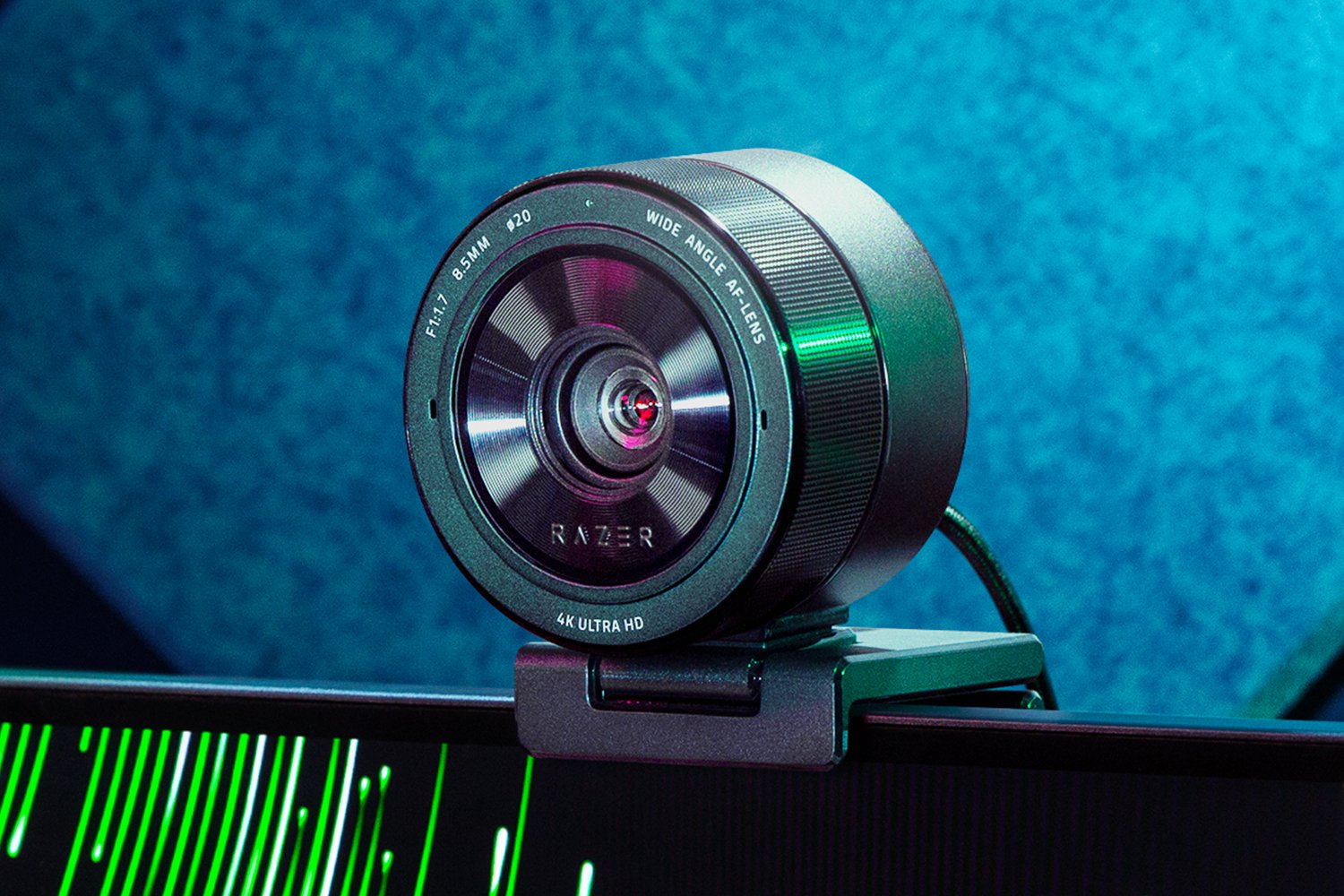
Pros
- ‘DSLR-quality’ imaging
- 4K options, HDR too
- Terrific configurability
- Lens cap as well as a privacy shield
Cons
- Whew, that price!
- Average mic quality
- No Windows Hello
- Limited purchase options; just Razer.com for now
Price When Reviewed:
$299.99
The Razer Kiyo Pro Ultra claims to offer DSLR-quality images, and boy, it comes pretty close! Unfortunately, many webcams have a wispy, ghosty effect when capturing video, and you’ll find none of that here—you’ll look like a professional caught on camera. This is simply one of the best webcams you can buy, though you’ll pay for the privilege, too.
The Razer Kiyo Pro Ultra captures video at 4K at 30Hz or 1080p at 60Hz, using autofocusing technology that does a great job. HDR is also an option, though you’ll probably prefer to turn off this option. The field-of-view varies between 72 degrees and 82 degrees, depending on the resolution. Manual pan and zoom are available, but you might wonder why the camera can’t orient itself toward your face automatically. Otherwise, the Razer Synapse software offers an absolute ton of configurability.
About the only thing that could stand to be improved is the mic—you may prefer using your laptop’s mic instead.
Read our full
Razer Kiyo Pro Ultra review
NexiGo N980P – Best webcam for wide-angle
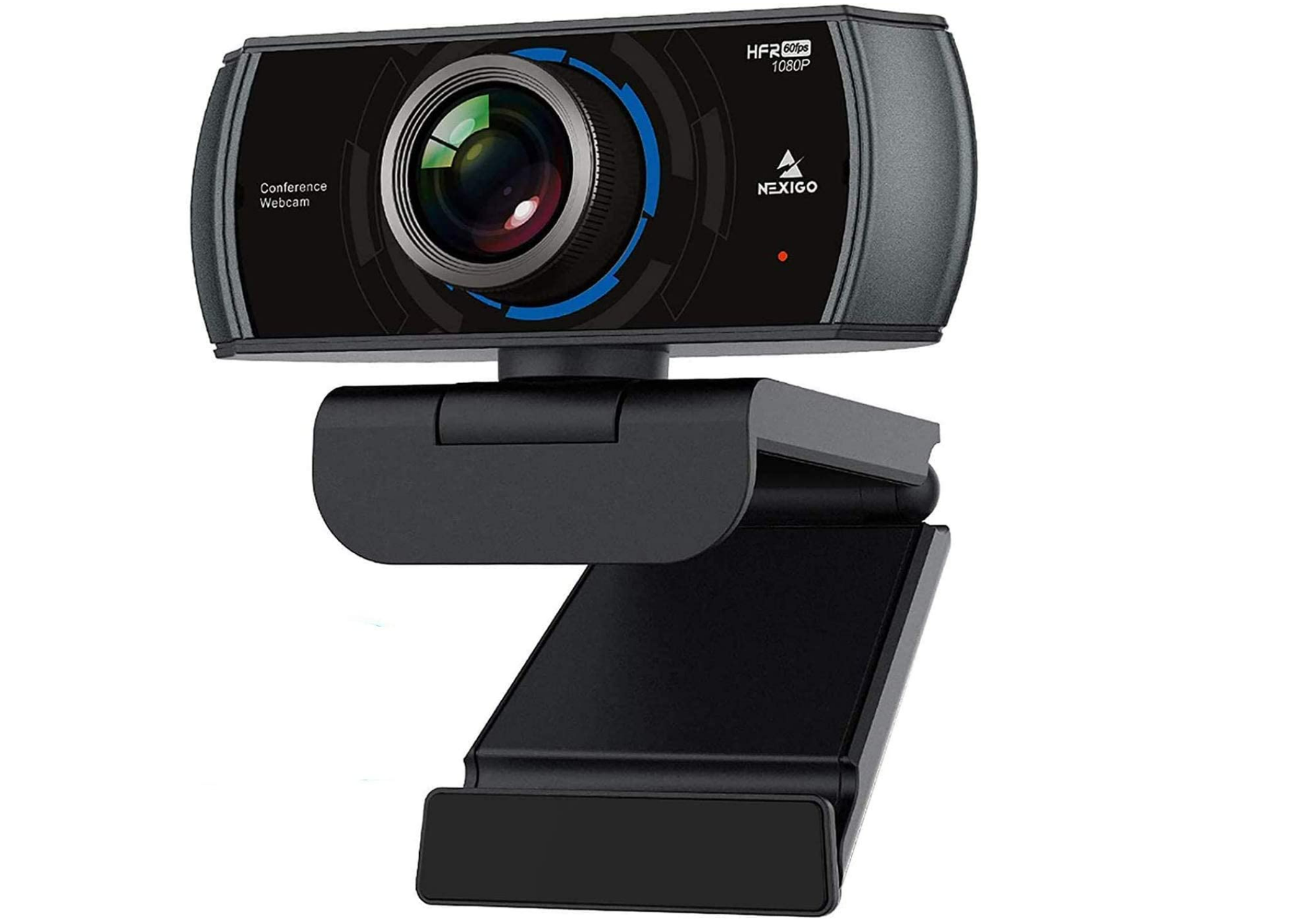
Pros
- 60fps
- 120-degree viewing angle
- Privacy shutter
Price When Reviewed:
59.99
This fixed-focus 1080p webcam captures frames at a smooth 60 frames per second, as opposed to the more standard 30fps. You’ll look smoother and more lifelike as a result. The camera also captures at a 120-degree angle, which might not be ideal for a home user but can work quite well in a living room or conference room. This webcam is very highly reviewed on Amazon, with reviewers praising it for its color balance but criticizing it for its inability to be finely adjusted.
It’s still a fixed-focus camera though—if you want an autofocusing model we’d recommend you pay about $100 for the upgraded NexiGo N680p instead.
Logitech Brio 4K Ultra HD Webcam – Best premium webcam for Windows Hello

Pros
- Sharply detailed resolution with vibrant colors
- Wide-angle field of view
- Infrared-based facial recognition
Price When Reviewed:
$199.99
If we’re being honest (and price is no object) the Dell UltraSharp webcam above would be our top pick for a Windows Hello webcam — a webcam that not only can show you off on Zoom or Teams, but can also log you in via biometric identification. But Logitech’s also feeling the heat, and it has lowered the price of its Brio 4K as a result. We can’t help but recommend it.
The Brio 4Kstill ranks highly among premium webcams, primarily because it’s one of the few autofocusing webcams that captures in 4K resolution. The Brio includes a ton of features to make you look great, and its Windows Hello support will log you in in a snap.
Read our full
Logitech Brio 4K Ultra HD Webcam review
MouseComputer Facial Recognition Webcam – Best budget webcam for Windows Hello

Pros
- Inexpensive, but decent quality
Cons
- 720p resolution
- You may need to disable your PC’s own webcam
Price When Reviewed:
$69.99
Our separate story on Windows Hello webcams offers cheaper options than the MouseComputer webcam, but the image quality of the webcam itself appears to be better—or, conversely, the competition is fudging on whether they offer true 1080p resolution. In any event, this $65 or so webcam seems to offer what you’ll need, plus Windows Hello functionality.
Users have complained that you’ll need to make sure Windows is up to date and that your webcam is directly plugged into your laptop. There’s no privacy shutter, unfortunately.
How to shop for a webcam
A standalone 1080p webcam can greatly improve how you look on your next Zoom call. Here’s what to look for: Prioritize a 1080p webcam, then a higher refresh rate, then jump up to 4K. If you can get more than one feature, great! Unless you’ll be moving about a lot, a fixed-focus webcam will do just fine.
It’s important to note that of the three major videoconferencing services (Microsoft Teams, Zoom, and Google Meet) only Teams will automatically scale up your video to 1080p if your network and your webcam support it. You can enable 1080p video in Zoom and (finally!) in Google Meet, but they require some manual adjustment in the app’s Settings menu. All three services will eventually auto-scale video calls for 1080p cameras — it’s just a matter of time.
Looking like you’re on television will subtly lend you authority. People gravitate toward celebrities, and a 4K, 60Hz webcam is basically what your TV offers. If you’re an executive or making sales calls over Zoom or Teams, a premium webcam may give you an edge. That’s why professional streamers use them, after all.
Adjustable or fixed focus
Don’t worry about fixed-focus, as virtually all webcams have been pre-configured at a focal length that’s about the distance between your face and your laptop or monitor. You’ll need to account for this with tripods, however, or pay a little more for an autofocusing webcam. Autofocus webcams are handy for situations where you may be moving about the room, but beware distracting webcams that frequently refocus.
Higher frame rates
A standard webcam captures video at 30 frames per second, and will look “normal.” You’ll notice the smoothness of a 60fps camera though, and so will people you’re on a video call with.
Field of view (FOV)
The camera’s field of view can vary. A 90-degree FOV helps people focus on you (and perhaps not the mess you’ve hidden off to the side). A 110-degree or higher FOV works better for group shots, although distortion can become a problem the wider your FOV gets. A 65-degree FOV may be perfect if it’s just you.
Think of a 90-degree FOV as one that would show two people seated side-by-side at what you would consider a “standard” distance from a webcam, or a foot or two. A 110-degree FOV can show three people, squeezed a bit close together. Keep in mind that many videoconferencing applications offer the option of virtual backgrounds, which eliminate visual clutter.
Privacy shutter
These devices are not a privacy threat, for the simple reason that they can be unplugged easily. Most have a flip-down privacy shutter, but you could always put tape over the camera or drape it with a dark cloth.
Ring lights
Yes, integrated ring lights are now a thing on premium webcams, and worth the money if lighting is a challenge for you. While the integrated light will certainly help with lighting, a big bright monitor display (use a full-screen version of Notepad for a white screen) in front of you can serve a similar function. You can also purchase a ring light separately.
Windows Hello
You may have used Windows Hello with a fingerprint reader or another laptop. The camera simply “recognizes” you, logging you in. It’s exceptionally convenient. We have a separate article on the best Windows Hello webcams.
Tripod bundle
With so many webcams on the market, manufacturers are trying hard to differentiate their products. The new trend is a small tripod, which gives you more options for mounting the camera. Not all webcams include this. Normally, however, you can simply clip the webcam to the top of a display or a laptop with its “jaws” clamp, so a tripod isn’t really necessary unless you move around a lot or want a different angle.
AI
There’s a potential wild card that may be attached to webcams in the future: artificial intelligence, specifically Windows Studio Effects. Right now, the current Surface Pro 9 (5G) uses the AI capabilities in the Qualcomm Snapdragon processor to apply background blue, automatic panning effects, and more. (Our review discusses this.) Other laptops that use Intel Core and AMD Ryzen processors don’t include AI capabilities — yet. Specific models in the 13th-gen mobile Core and AMD Ryzen 7000 Mobile series include some basic AI capabilities, and future processors in both families may offer AI capabilities and therefore Windows Studio Effects.
The OBSBOT webcams don’t need any of this, using an independent gimbal and tracking software to keep you in the frame.
FAQ
Can you use a smartphone as a webcam?
Soon, yes! Microsoft is testing a smartphone webcam feature in Windows 11 that sounds like it should be out in a month or two. The feature would allow you to mount a smartphone (how you do it is up to you) and then use either its front or rear camera as a webcam in any and all video applications. You’ll need a phone running Android 9 or above, and the connecting software to enable it to talk to Windows.
Sorry, iPhone users: This is only for Android smartphones.
Do you need Wi-Fi for a webcam?
Yes and no. These webcams all connect to your computer directly, via a USB port, and you can record video from them while offline. Your computer will then need to be connected to either ethernet or to Wi-Fi for you to be able to chat with a friend or business partner, however.
Can a webcam work without a computer?
Some webcams can work without a computer, but not all of them. USB webcams, featured here, connect via USB to a computer and require it to operate. USB webcams are most often those used for video chat or live streaming from your computer on websites such as Twitch.
IP webcams however, can connect directly to a network, router, or modem and do not require a computer at all in order to work. IP webcams are most often used as security cameras or for live feeds that upload directly to the cloud. Those are separate products, however, and not the same webcams we’re talking about here.
How do I connect my webcam to the internet?
For USB webcams, it will be as simple as plugging the camera into your computer’s USB port, and then connecting to the internet via your computer.
What software do I need to connect my webcam?
Technically, most webcams are plug and play, so you should simply be able to connect them to your PC to get them to work. Many, however, require their own software utilities to be installed to take advantage of specific features and to facilitate automatic updates. To actually use your webcam in a conference call, however, you’ll need to use Zoom, Microsoft Teams, Google Meet, or another videoconferencing app. Make sure you enter the app’s settings menu and select the webcam’s camera and microphone to provide the audio and video for your call.
This story was updated on Feb. 29, 2024, noting Microsoft’s tests of using Android smartphones as a webcam replacement.



